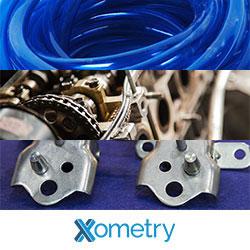GE opening microfactory in Chicago to build industrial prototypes
Give a 3D printer artificial intelligence, and this is what you'll get
MIT's Foundry software is the 'Photoshop of 3D printing'
Blockchain plus 3D printing equals 'smart manufacturing' and Ethereum you can touch
Additive Manufacturing
3-D-printed robots with shock-absorbing skins
Metamaterial Mechanisms
How to Attract Millennials to Advanced Manufacturing Jobs
Home 3D Printing 'Just Not There Yet' Admits MakerBot
New modular AM 'smart factory' from Concept Laser decouples pre-production and production
Peugeot Teams Up With 3D Printing Startup for Parts and Possibly Full Cars
3D printed designs easily stolen by nearby smartphone
3D Printers in Schools
GE speeds up 3D printing push with bids for SLM, Arcam
Two Game-Changing Approaches for Manufacturers
Records 541 to 555 of 755
First | Previous | Next | Last
Additive & 3D Printing - Featured Product

